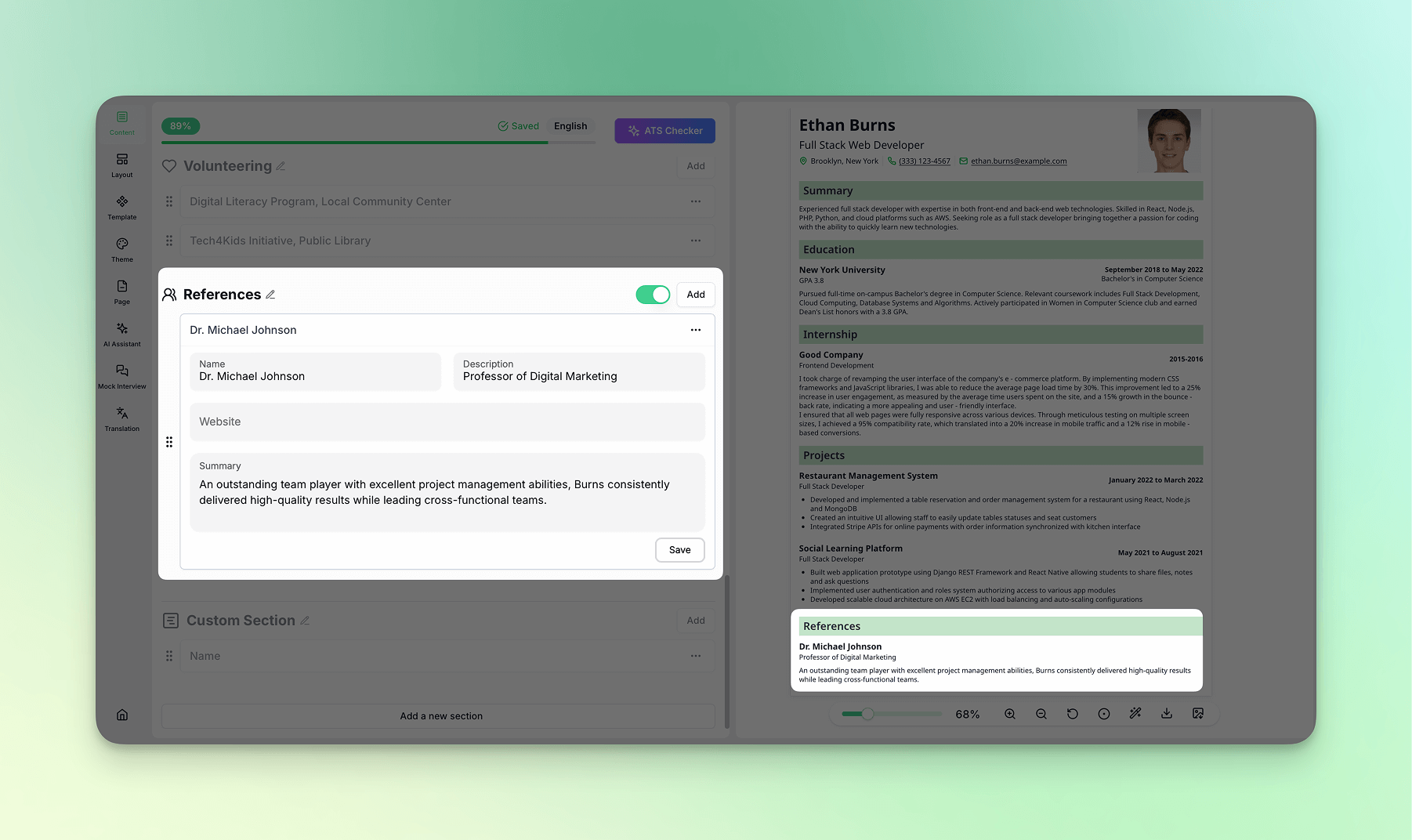Built-In Resume Modules
TalenCat CV Maker offers a comprehensive suite of built-in resume modules that cover various information dimensions necessary for job applications. You can adjust these modules based on the target position to maximize your personal strengths in your resume.
The "Basic Info" module is mandatory, while other modules can be added or removed as needed to fit the job requirements.
Key Considerations:�
- A progress bar at the top of the resume editing page visually indicates your resume completion status, providing suggestions for module additions.
- The system auto-saves after editing content, but due to network variations, saves may occasionally fail. It's recommended to manually save after each module to prevent data loss.
- There's a toggle switch on the right of each module; when turned off, the module will be hidden in the resume preview.
- You can add multiple sub-modules within each module and reorder them by dragging.
- Adjust the module order through the layout settings.
- Avoid redundant information, such as overlapping project content in both "Work Experience" and "Project Experience" sections.
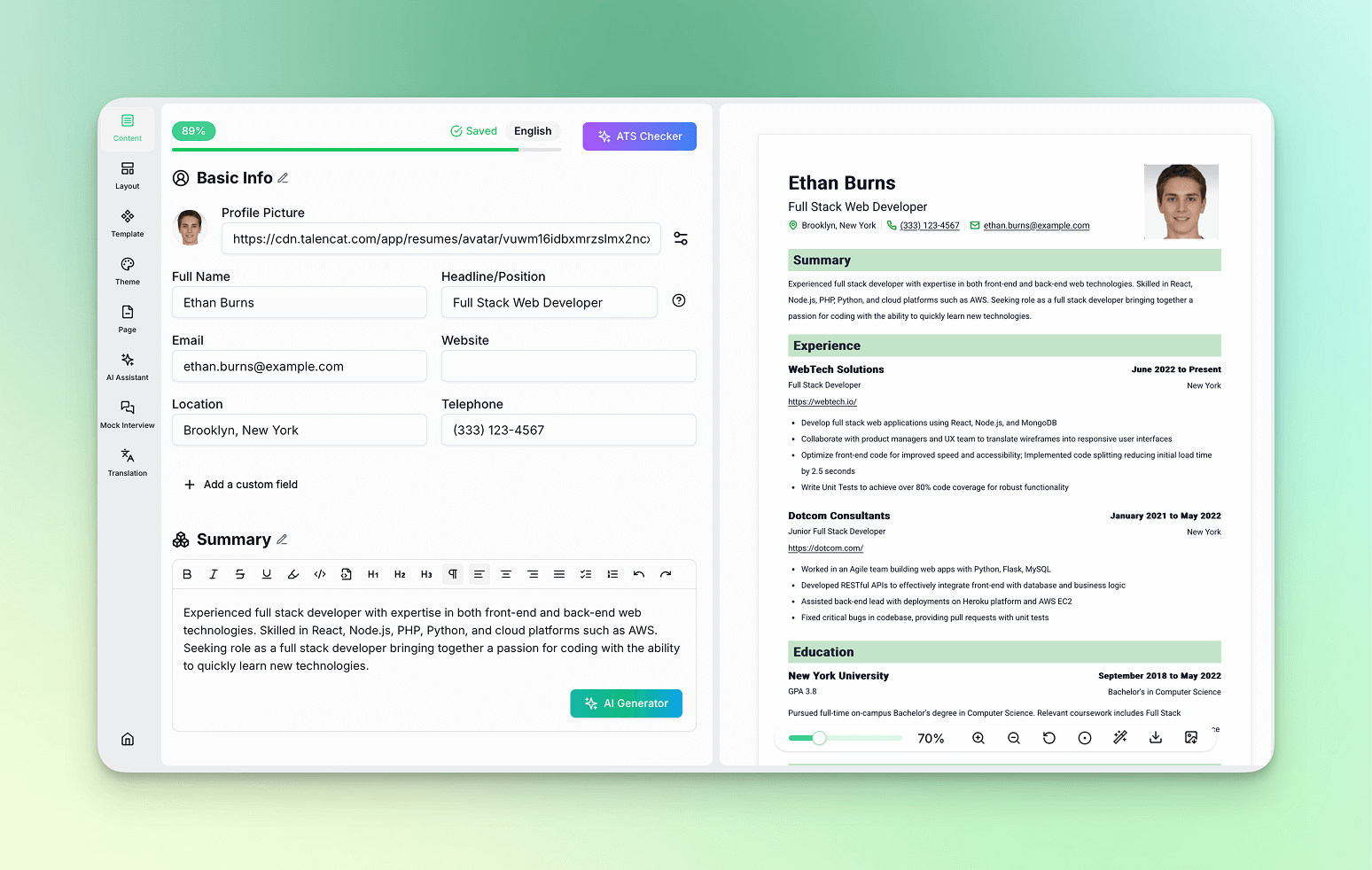
Here is a breakdown of each module:
1. Basic Info
The Basic Information module is a default, non-removable core module used to display your essential personal details, including: profile picture, full name, headline, email, website, telephone, and location.
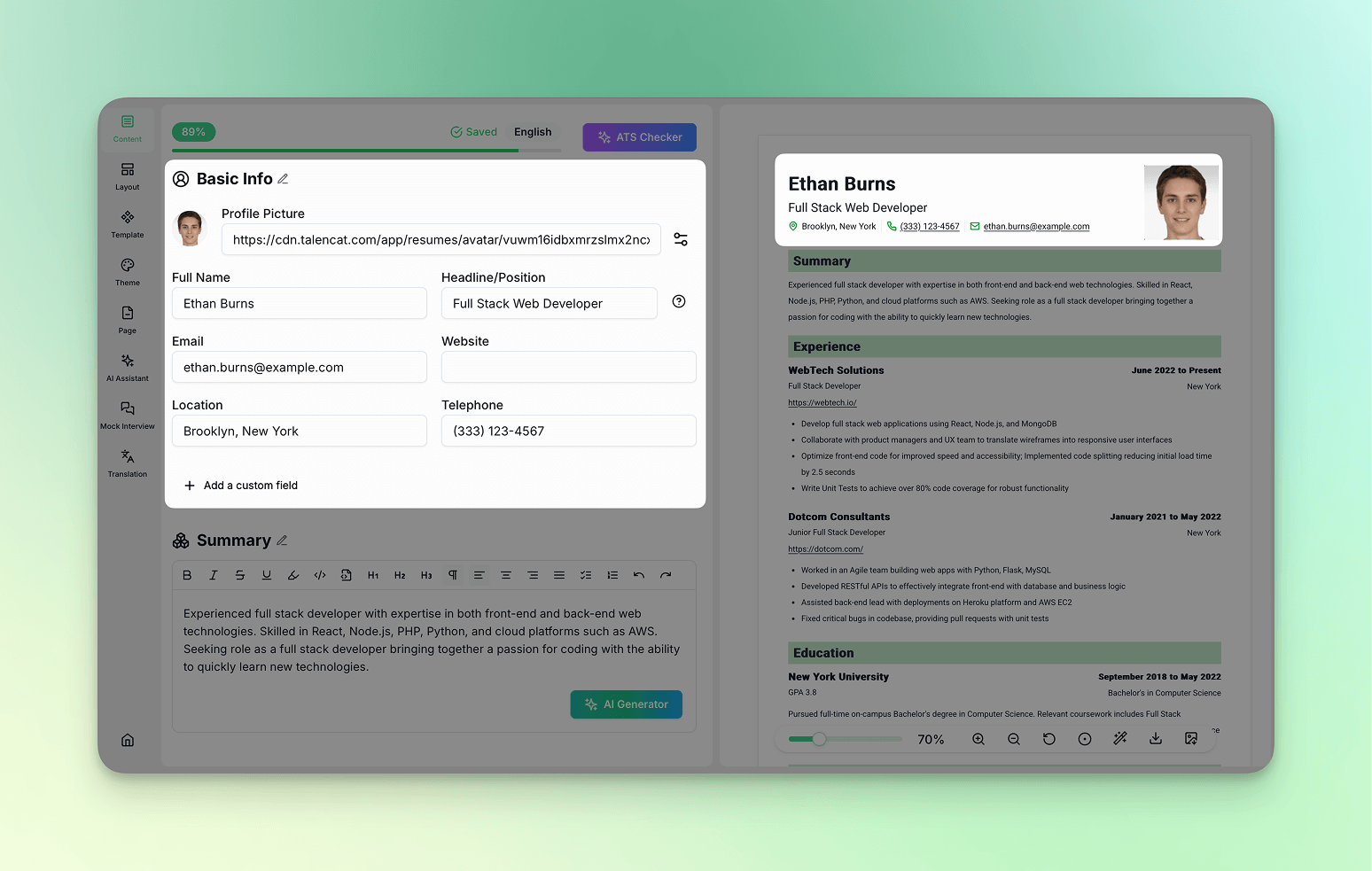
You can upload a photo by clicking the avatar icon in the module, with options to customize the image size, aspect ratio, corner rounding, and borders.
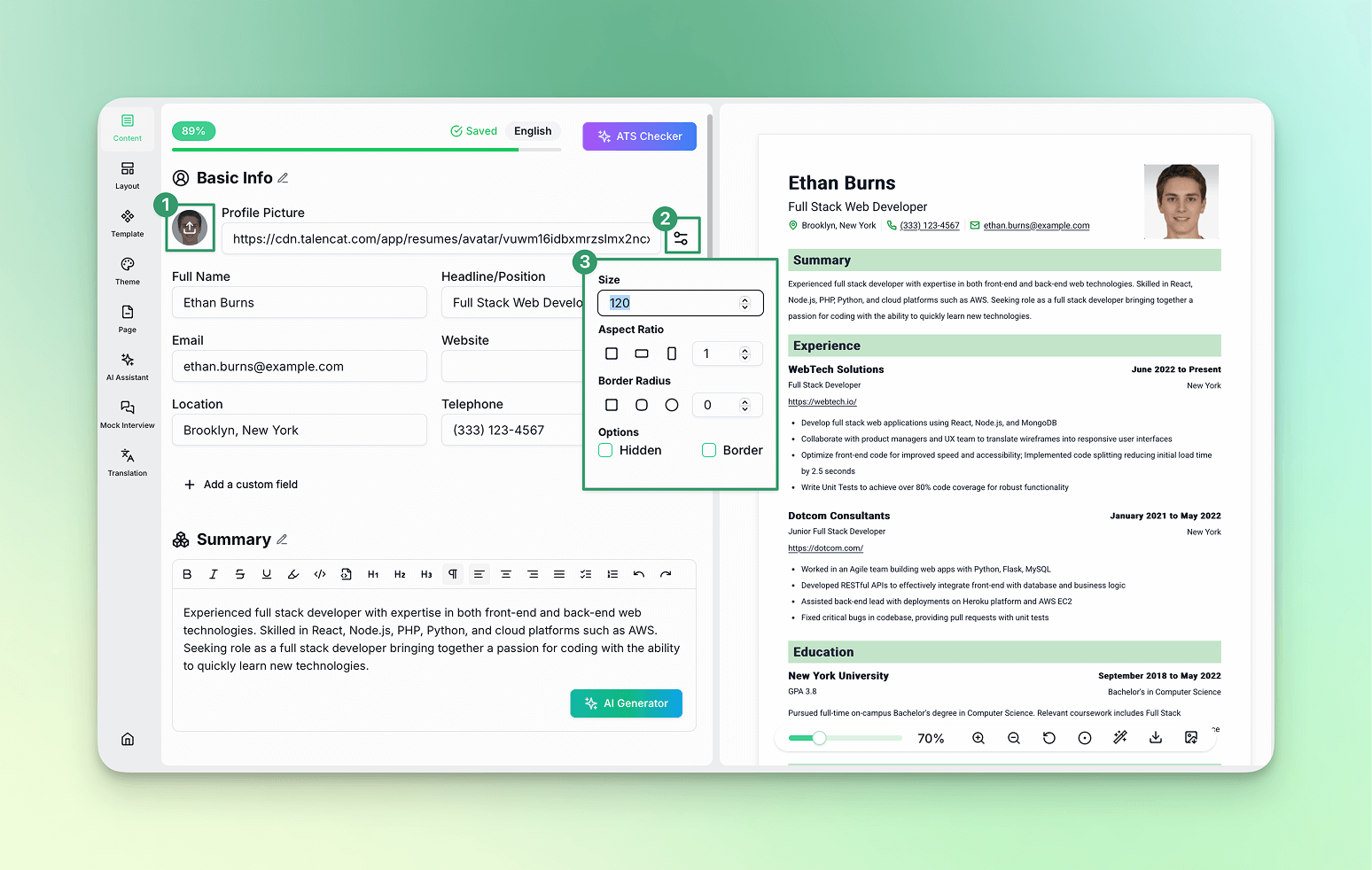
Ensure all information is accurate after entry.
2. Summary
This module provides a brief overview of past experiences, personal strengths, career objectives, and core competencies, showcasing your fit and value to potential employers.
Tips:
- Keep it concise, ideally within 3 lines, highlighting why you are suitable for the role.
- Avoid excessive adjectives without significant value.
- Use specific ability descriptions.
- Consider using AI to auto-generate content for reference and then tweak as needed.
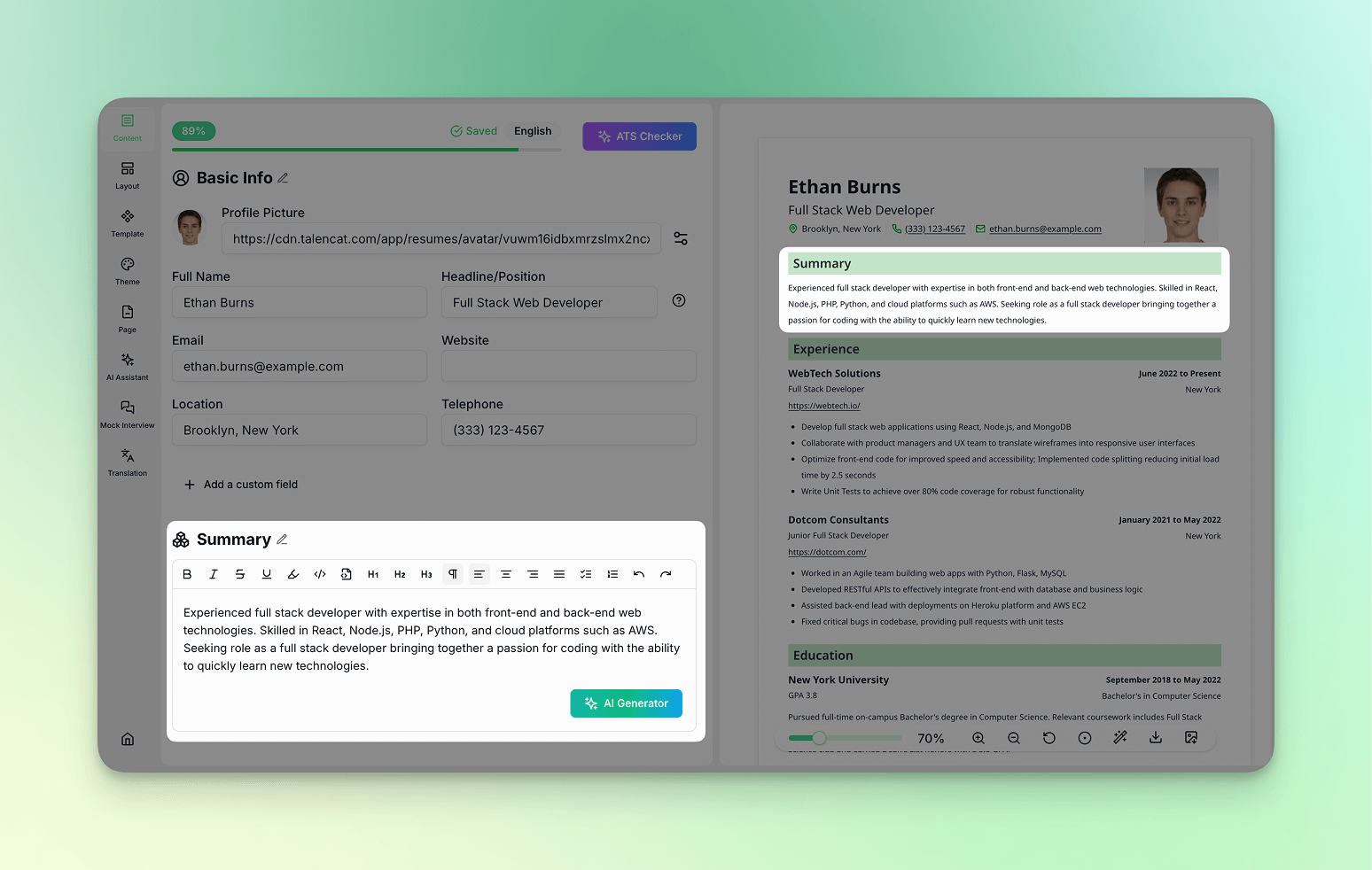
3. Profiles
The Profiles module allows you to showcase your personal network accounts, offering recruiters insight into your personality and abilities. If you have significant influence or a large following on any platform, listing those accounts here might help you stand out in your job search.
Filling Tips:
- Tailor the information based on the position; for example, developers might list a personal blog or GitHub, while marketers could include TikTok or Instagram.
- Include links to professional profiles like LinkedIn to give recruiters a better understanding of you through social media.
- Limit the entries to three or fewer to maintain focus and relevance.
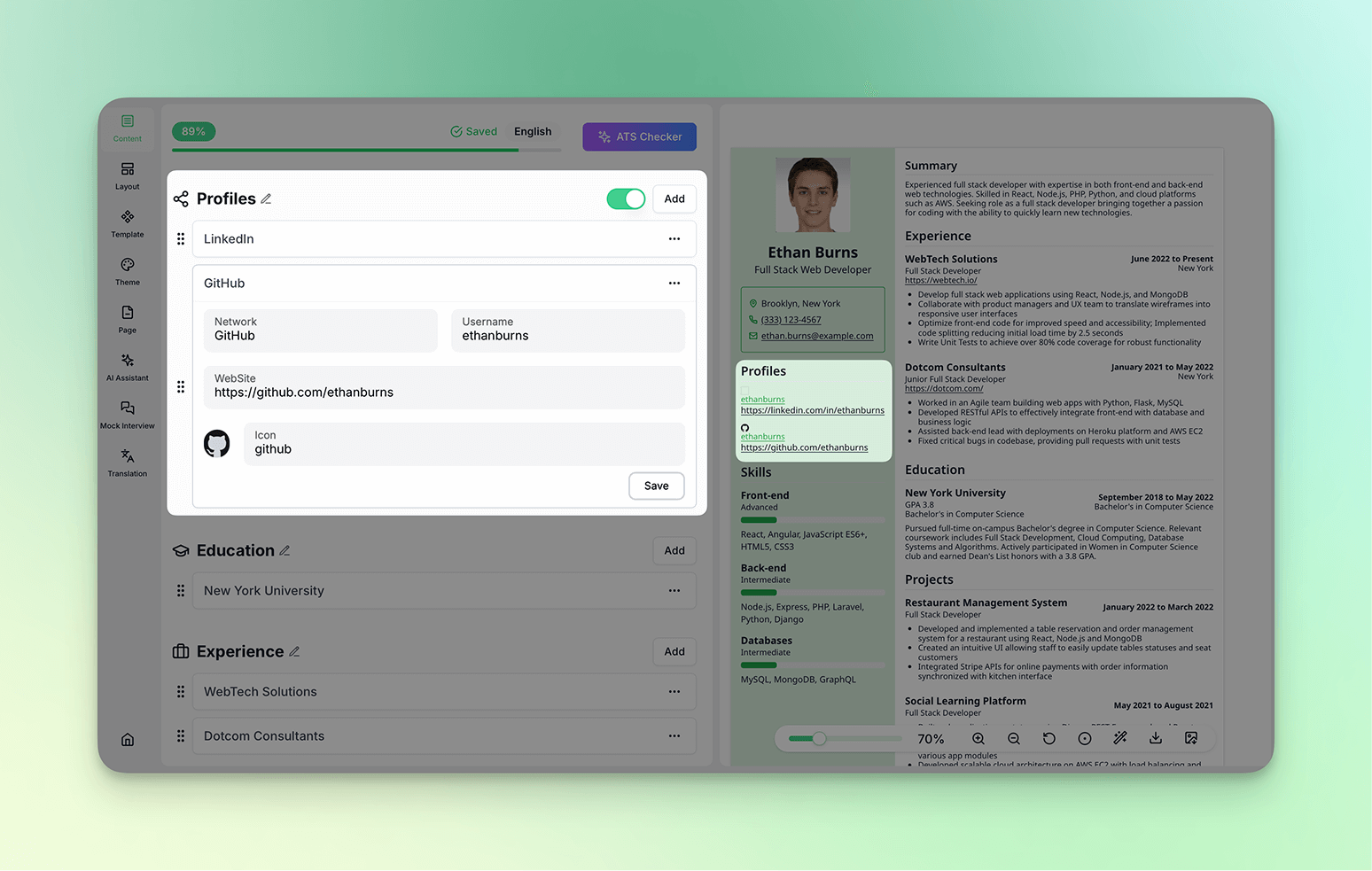
4. Education
Used to showcase educational background, especially important for recent graduates or newcomers to the workforce.
Tips:
- List in reverse chronological order, with the most recent qualification first.
- For graduates, add core courses related to the position; simplify course details for experienced candidates, highlighting qualifications and honors.
- Summaries can be AI-generated and then refined as needed.
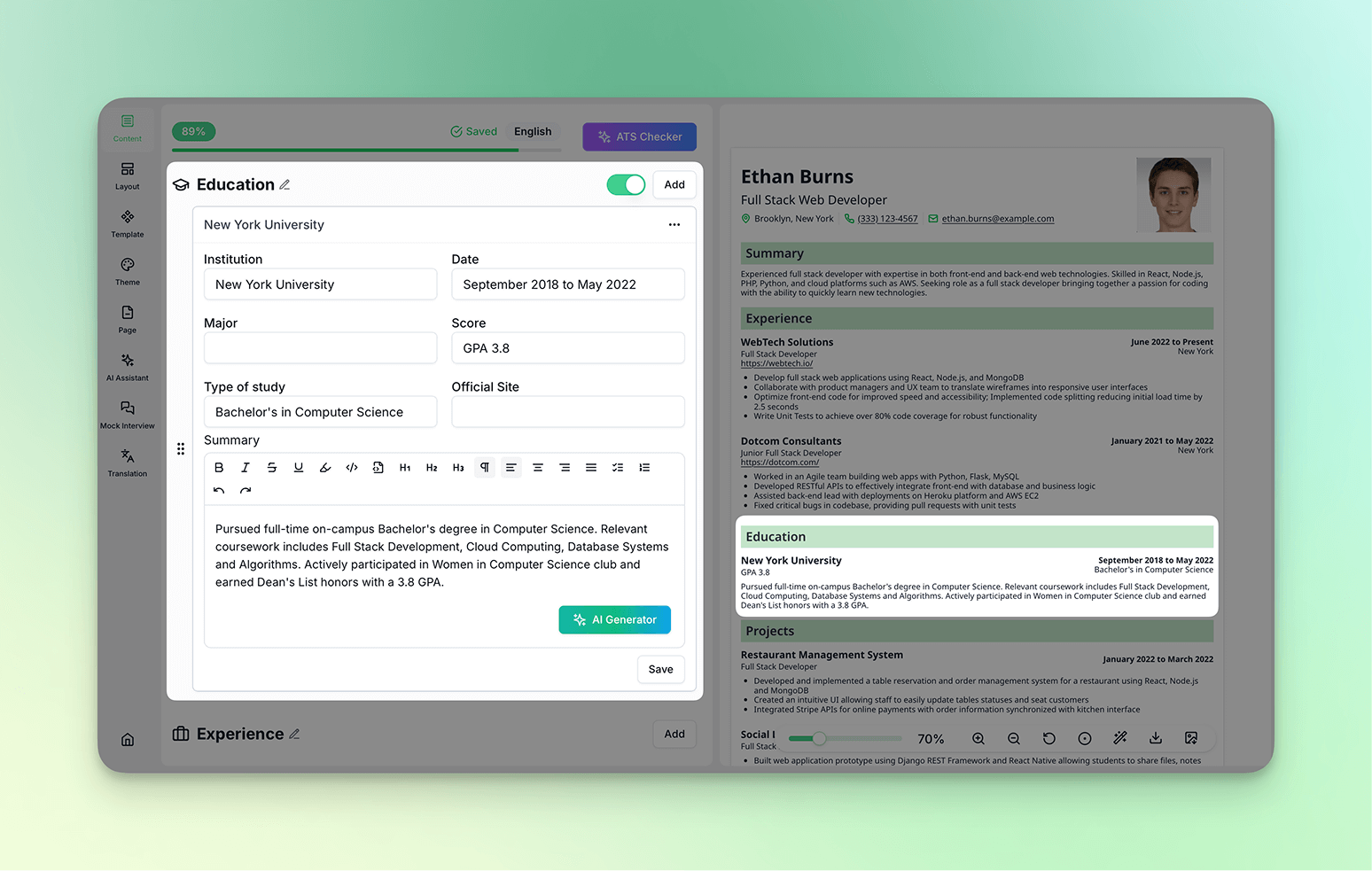
5. Experience
This module highlights professional growth and expertise, detailing job duties, responsibilities, and achievements.
Tips:
- List in reverse chronological order, with most recent experience first.
- Highlight skills relevant to the target job.
- Quantify achievements with data, rather than listing duties.
- Use AI to draft summaries and personalize them accordingly.
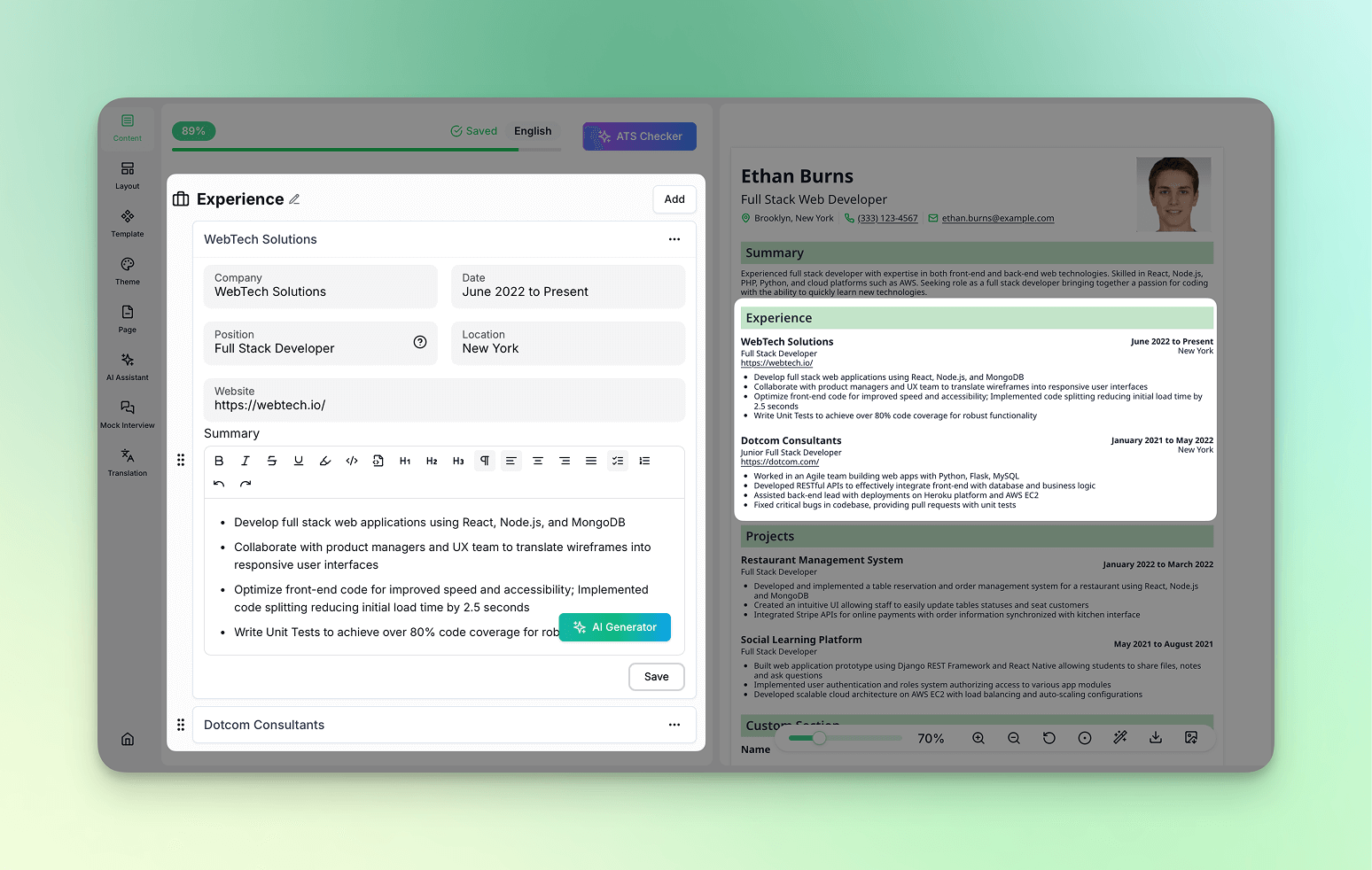
6. Projects
Detail key projects you’ve led or contributed to, showcasing problem-solving, teamwork, and practical abilities. This is a crucial component considered by recruiters.
Tips:
- List in reverse chronological order, with the latest projects first.
- Be concise, emphasizing relevance to the job.
- Prioritize projects based on importance/relevance to the job.
- Follow a clear structure: "Project Goal → Your Role → Actions Taken → Results."
- Utilize AI for an initial draft and customize as needed.

7. Internship
Mainly for students or newcomers, this fills gaps where formal work experience is lacking, highlighting practical abilities.
Tips:
- List in reverse chronological order, with the latest experiences first.
- Focus on internships relevant to the job, detailing interpersonal skills.
- Describe roles with "Specific Duties + Quantifiable Results."
- AI can assist with initial summaries, to be refined personally.
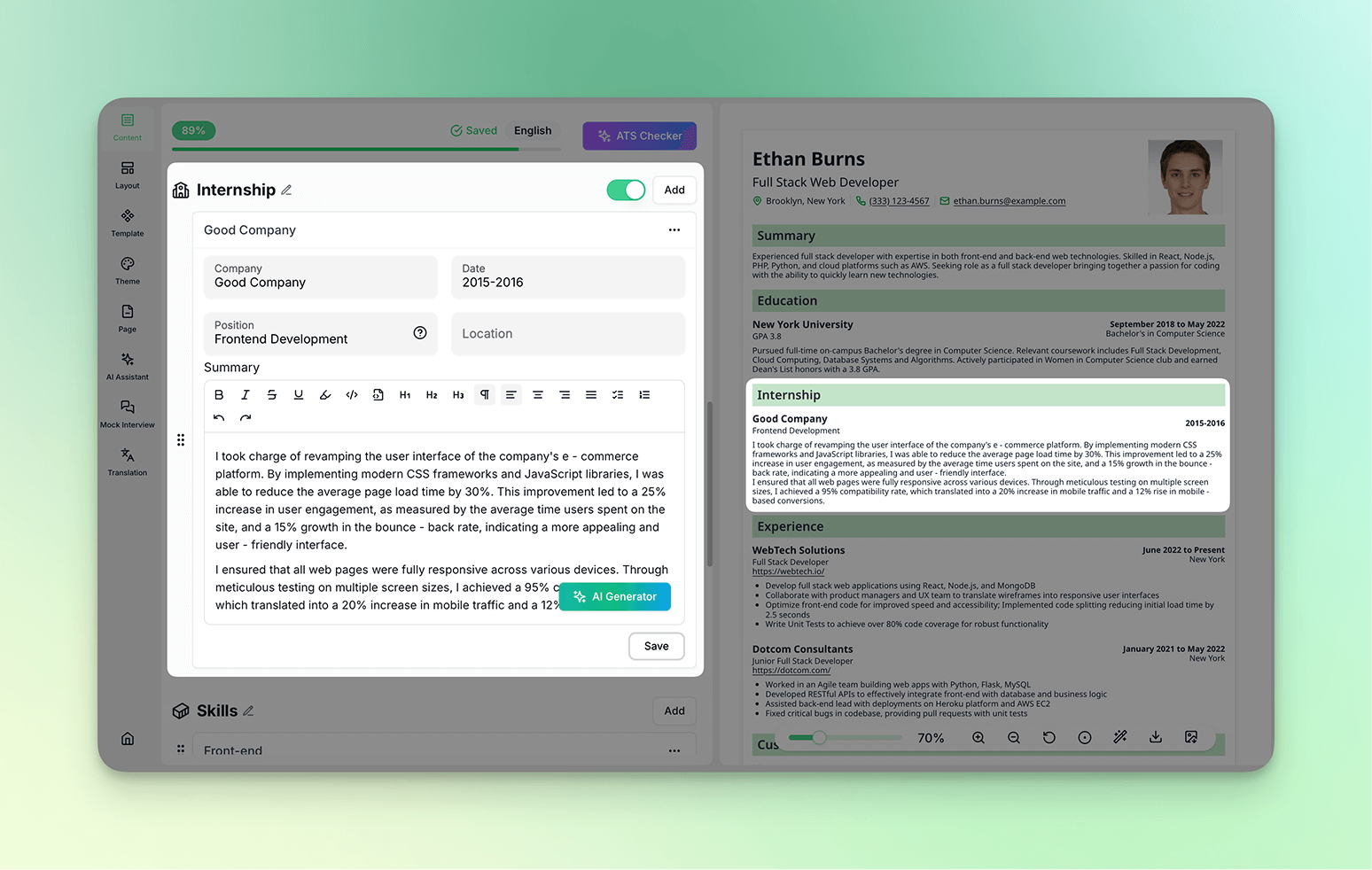
8. Skills
This module demonstrates your professional skills and proficiency, helping employers quickly assess compatibility.
Tips:
- Order by relevance to the position, emphasizing key skills noted in the JD.
- Avoid listing irrelevant skills.
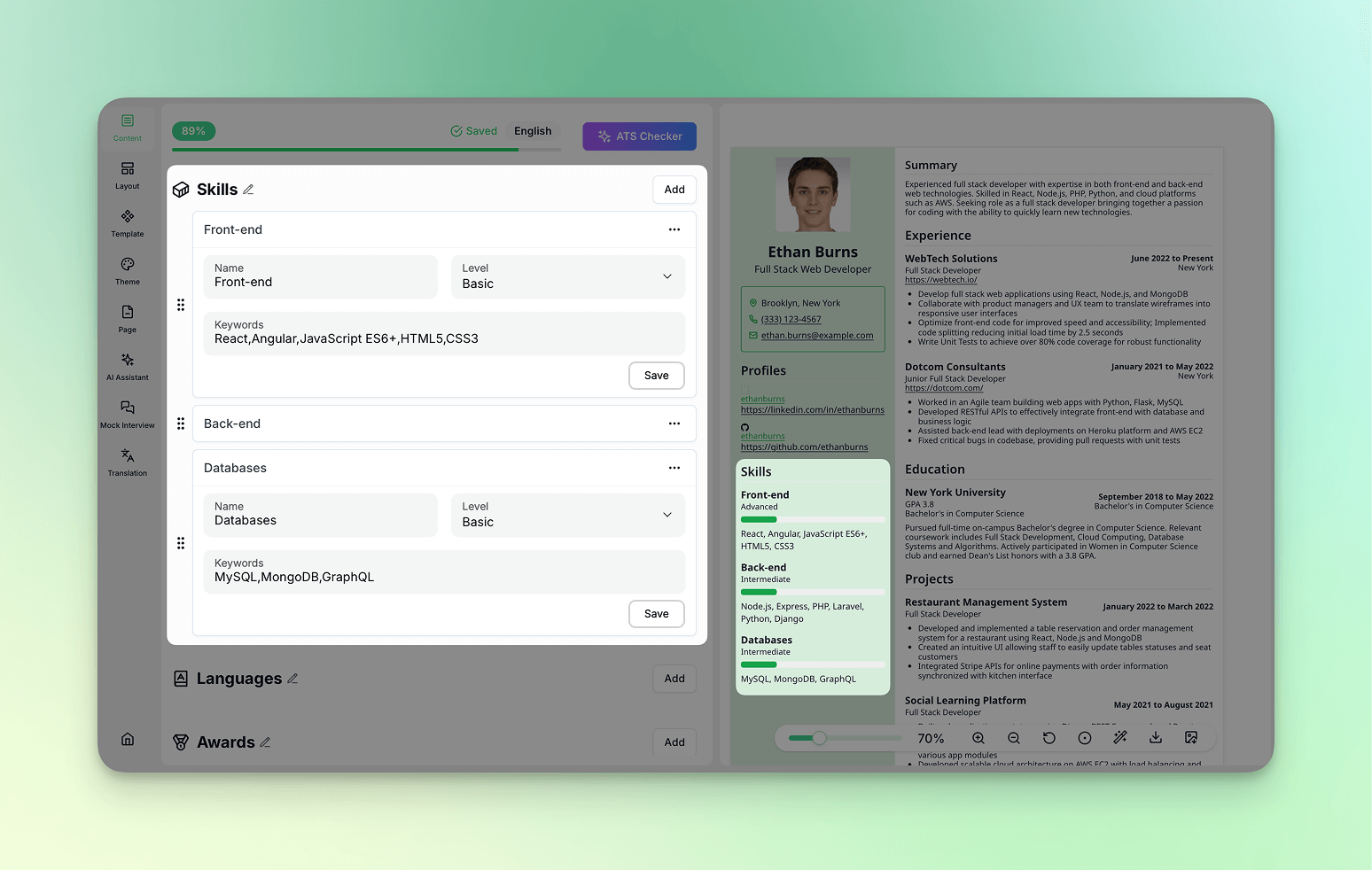
9. Languages
With globalization, multilingual skills are increasingly vital. This module is particularly relevant for international roles or language-related jobs.
Tips:
- Highlight authoritative certifications for more credibility.
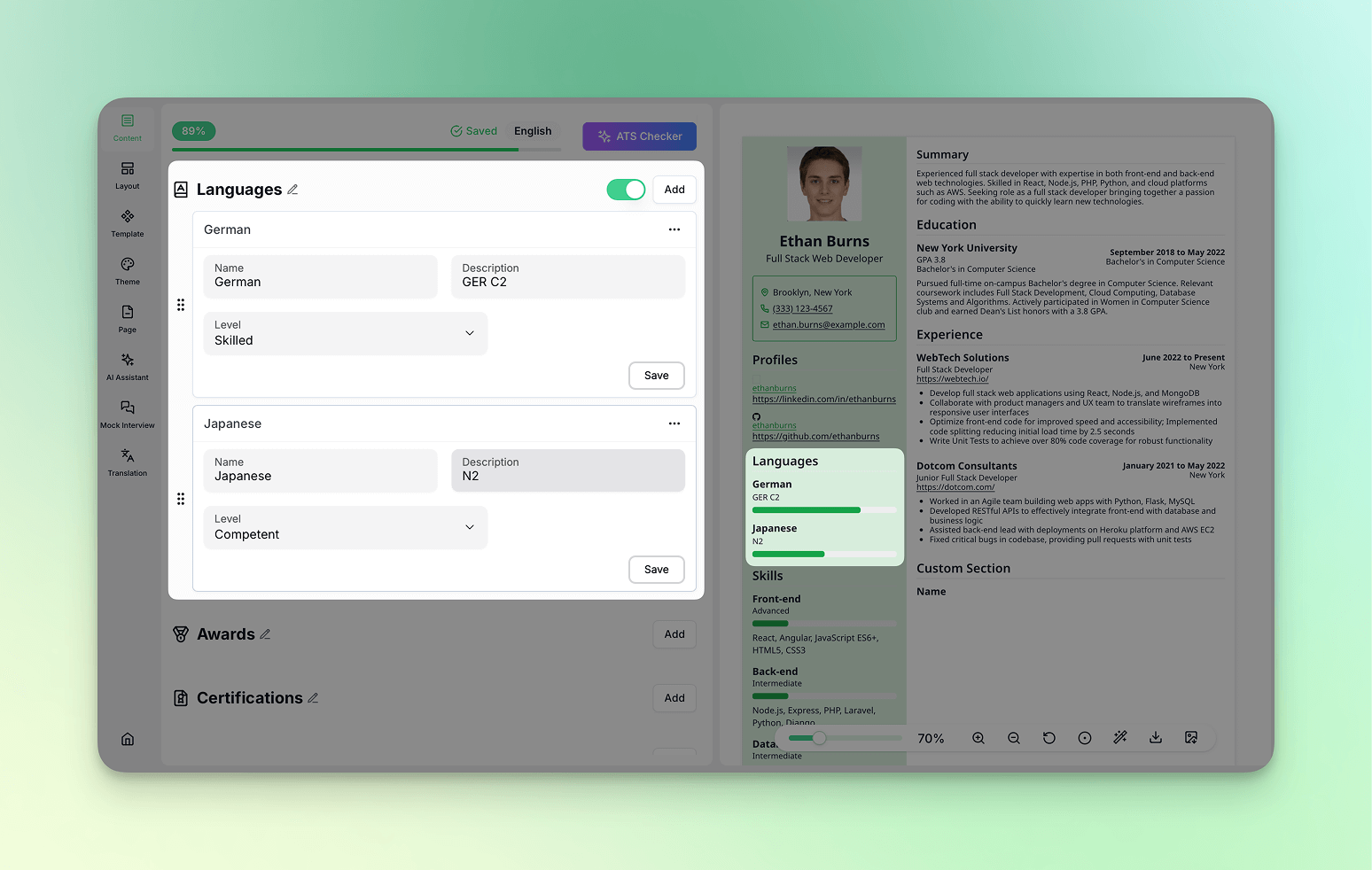
10. Awards
Detailing awards can validate professional competence and enhance credibility.
Tips:
- Include verifiable awards.
- Describe assessment criteria and background, explaining efforts made.
- Briefly mention award significance.
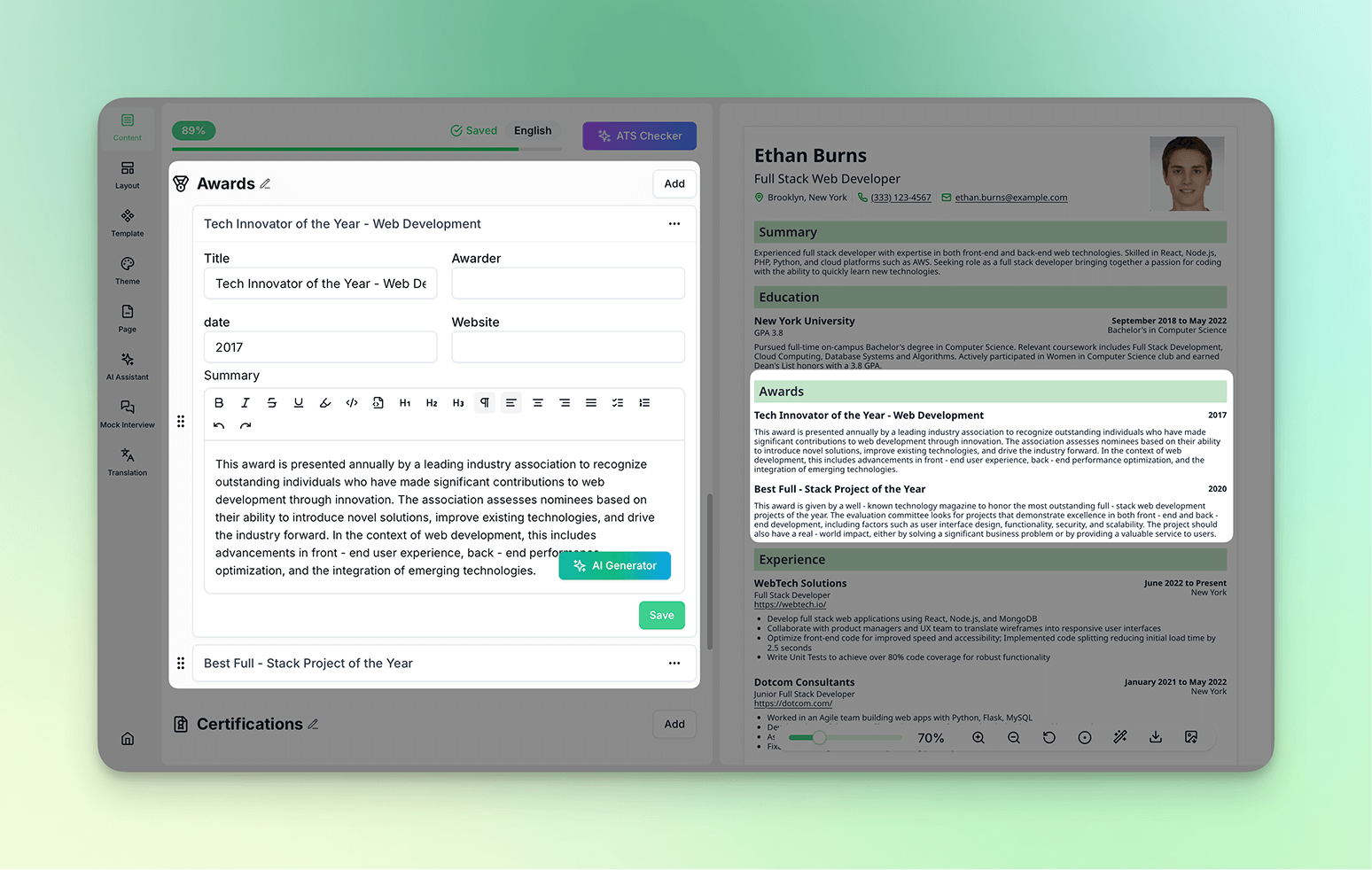
11. Certifications
Highlight certifications that validate qualifications and competency in your professional field.
Tips:
- Focus on industry-recognized certifications.
- Explain relevance to the position.
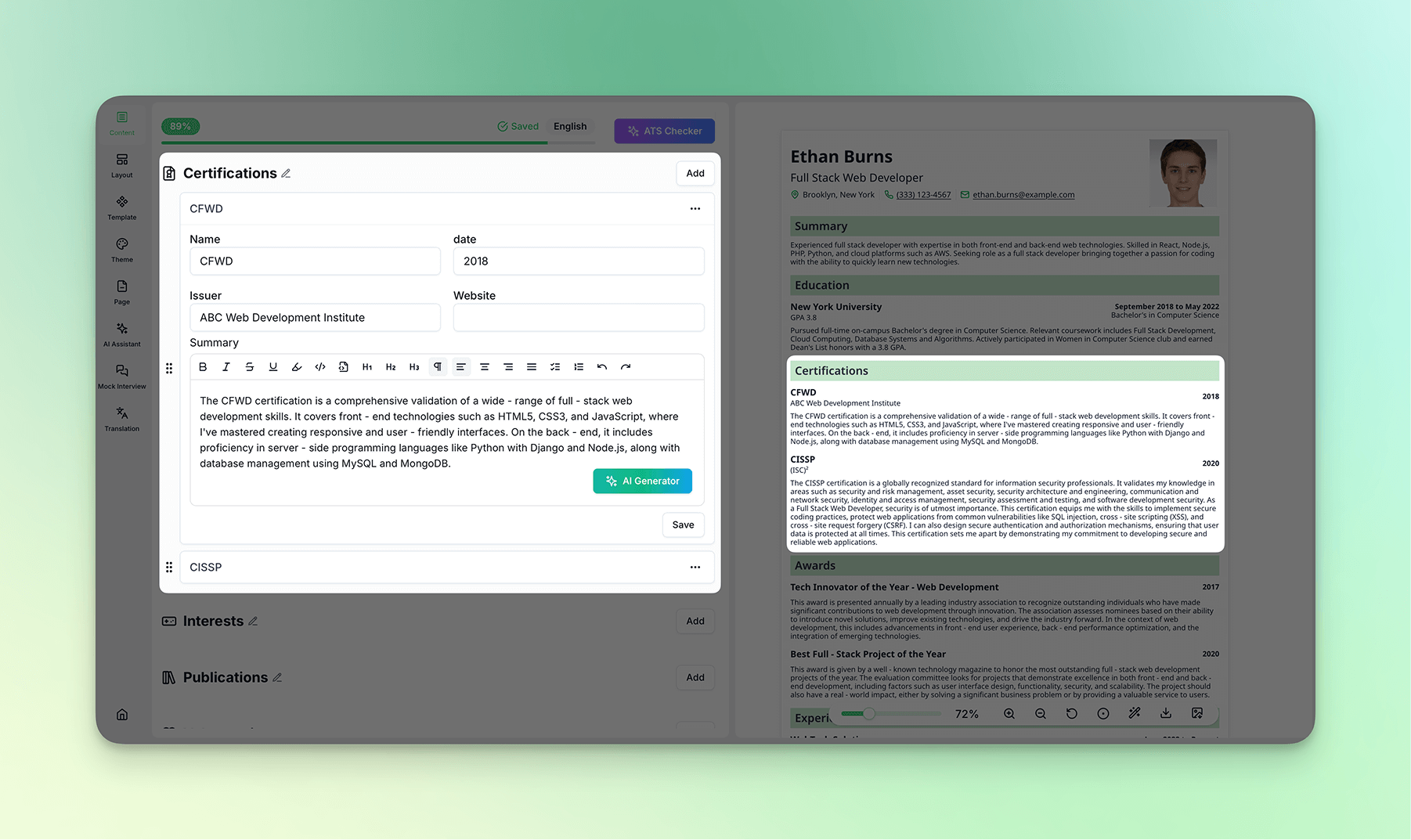
12. Interests
Showcase hobbies that indirectly reflect personal traits or potential abilities, assisting employers in assessing your fit.
Tips:
- Choose positive interests reflecting personal strengths.
- Avoid overly generic interests.
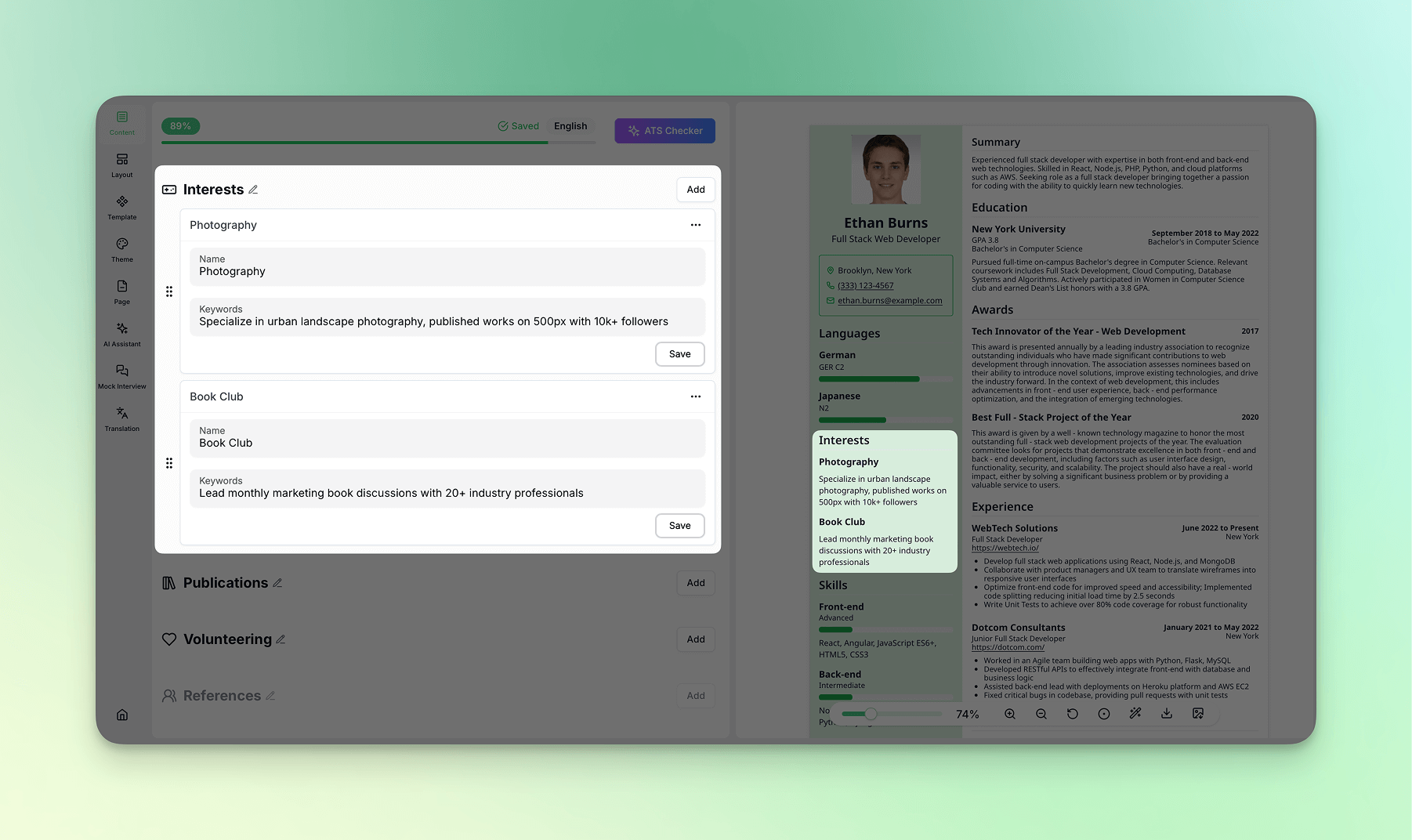
13. Publications
Like awards and certifications, publications demonstrate expertise and are valuable for academic, research, or specialized roles.
Tips:
- Highlight research areas relevant to the job.
- Briefly describe content themes, showcasing academic and research strengths.
- Note publication in high-impact journals where applicable and list co-authors if any.
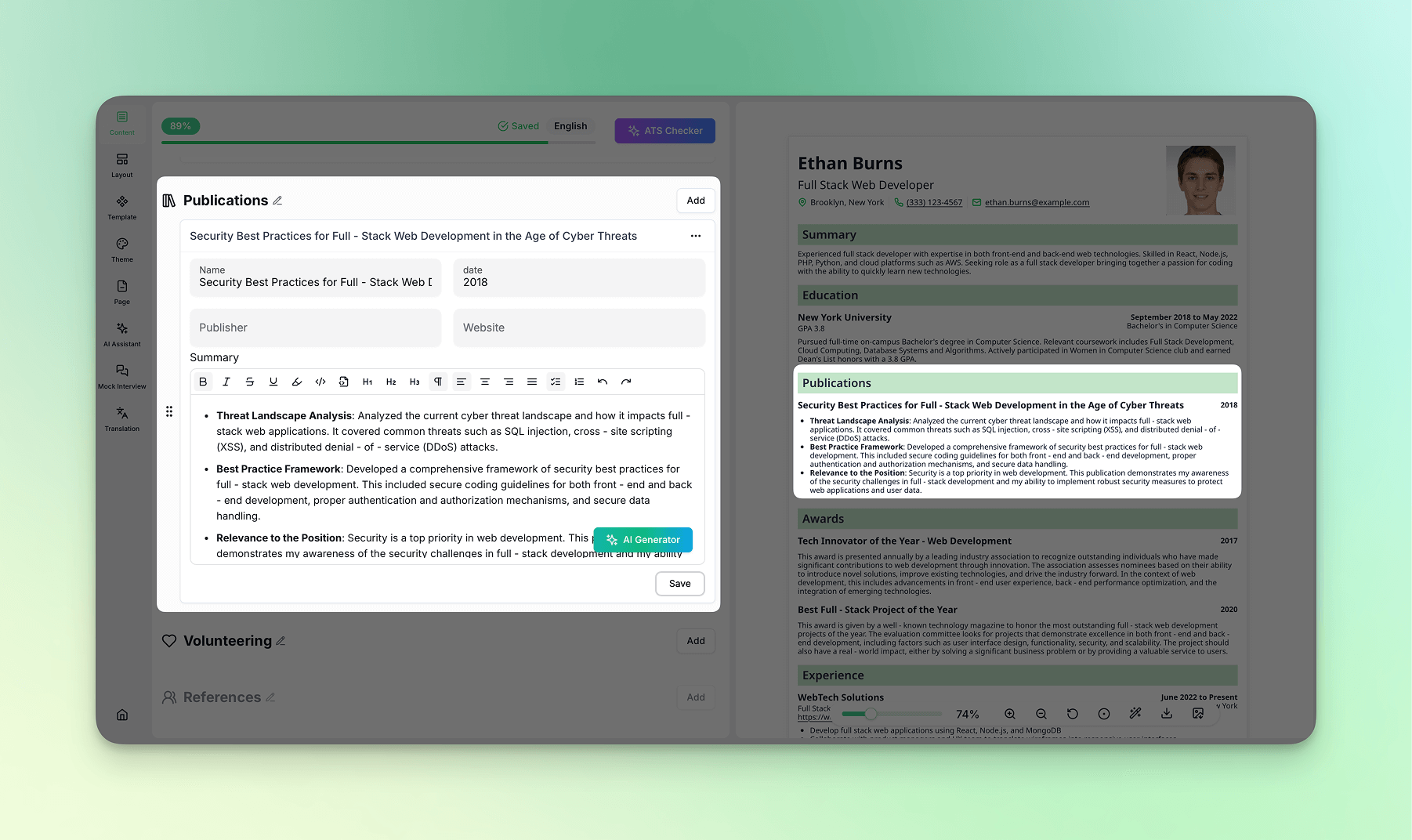
14. Volunteering
Volunteering showcases comprehensive qualities, social responsibility, and soft skills, appealing for roles emphasizing these attributes.
Tips:
- Detail roles, responsibilities, and contributions.
- Focus on skills gained from volunteering.
- Limit to 1-2 representative examples.
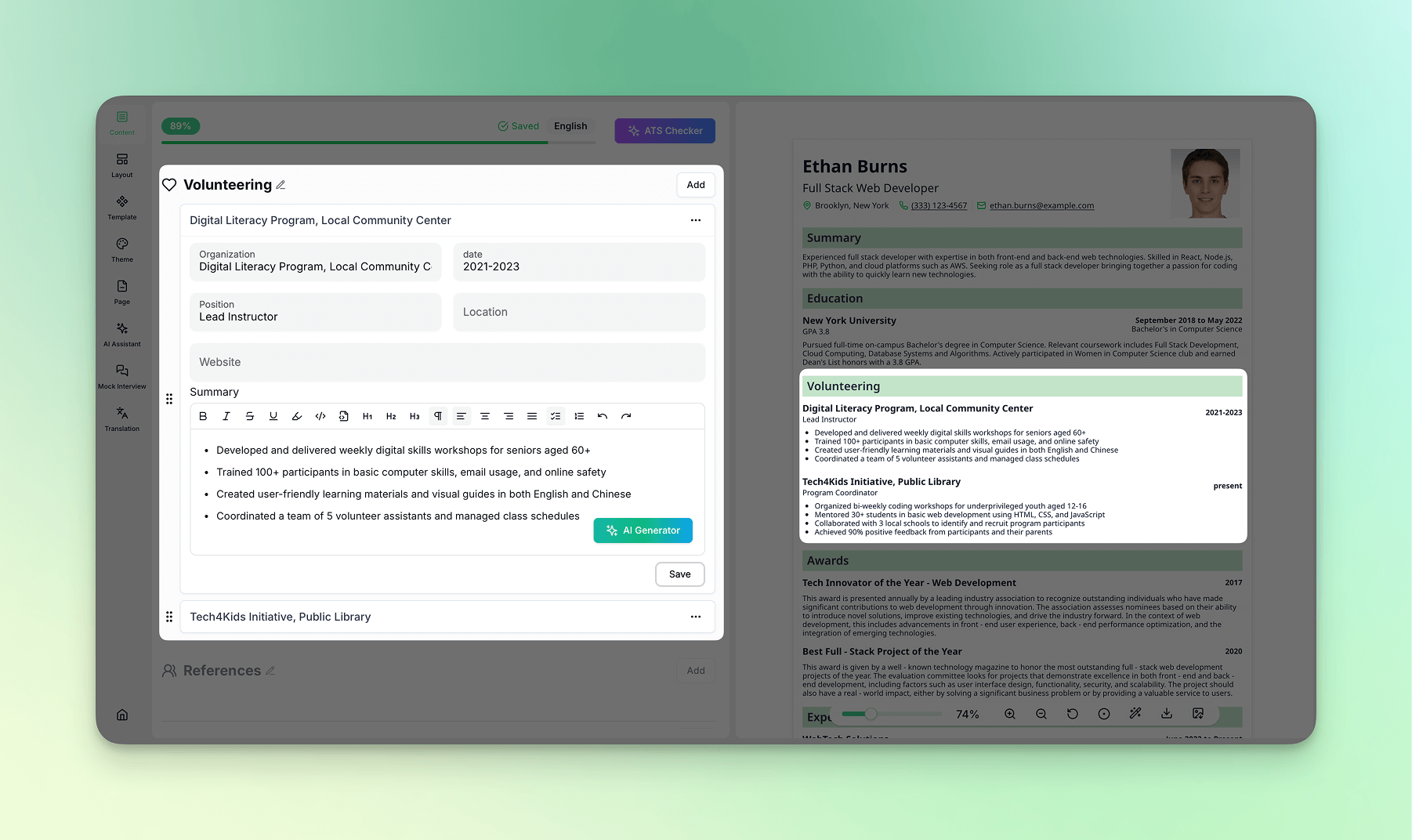
15. References
Listing references provides third-party validation of skills and character, boosting resume credibility, suitable for seasoned professionals or academic roles.
Tips:
- Obtain prior consent from references and ensure contact information is valid.
- Choose references with a direct work/cooperation history.
